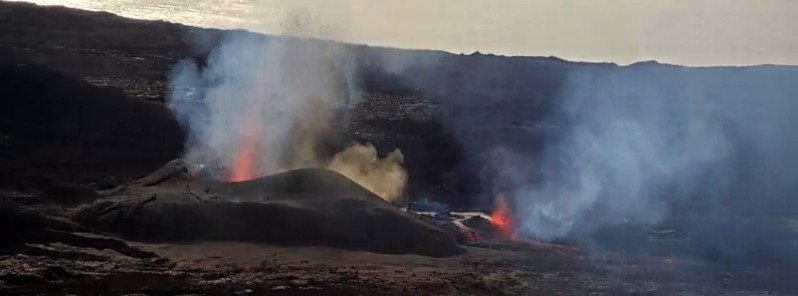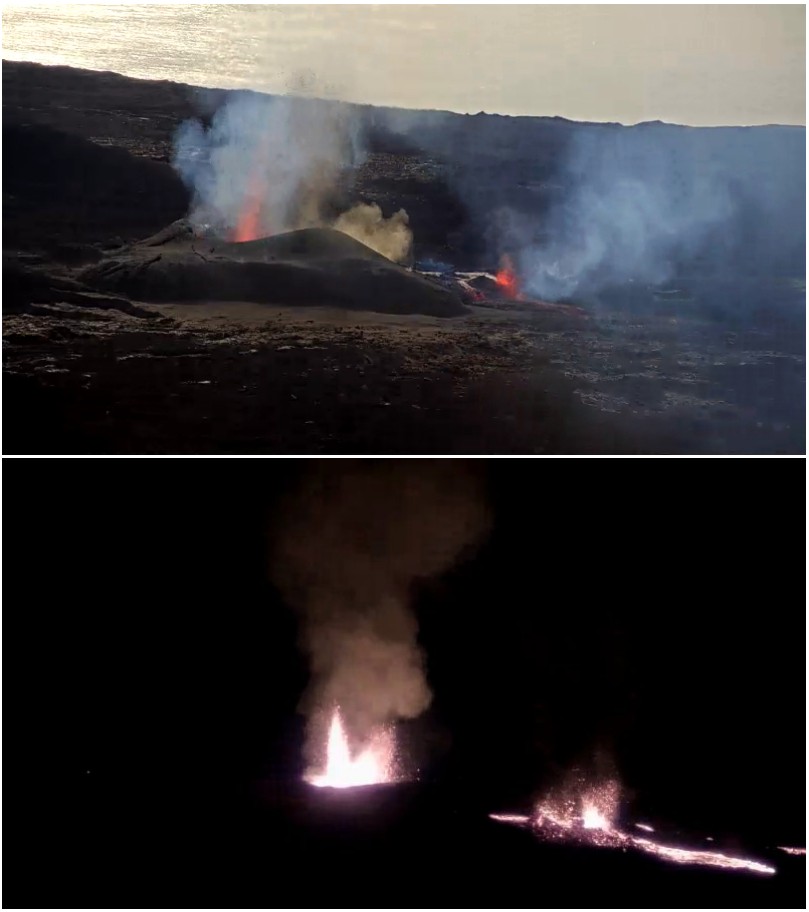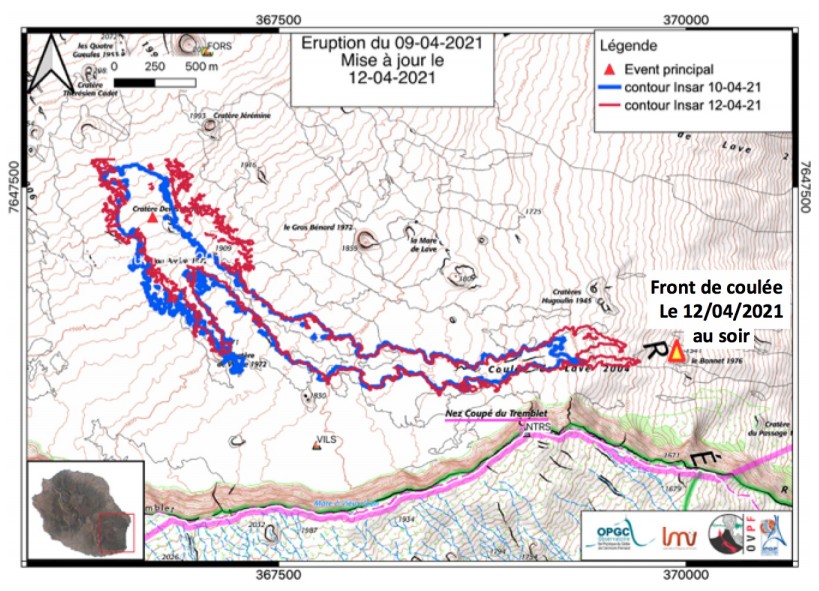Effusive eruption continues at Piton de la Fournaise volcano, lava reaches Piton le Bonnet, Reunion

The effusive eruption at Piton de la Fournaise volcano, Reunion continues from a new eruptive fissure on the southern flank of Enclos depression. The eruption started at around 15:00 UTC on April 9, 2021, following several hours of intense seismicity. The Alert Level remains at 2-2.
Volcanic tremor, indicating the intensity of the eruption, has been very fluctuating over the past 24 hours, OVPF reported in a bulletin released 02:45 UTC on April 13.
Lava spattering continues at two main vents, producing mild lava fountains reaching a height of about 60 m (196 feet).

Images captured on April 12, 2021. Credit: OVPF-IPGP-IRT
The advancing lava flow on the southern slope is about 3.6 km (2.2 miles) long today and has reached the Piton le Bonnet sector at an altitude of about 1 550 m (5 085 feet).

According to HOTVOLC, the current estimated discharged rate of the lava flow continues at values between 8 and 30 m3 per second since the start of the eruption.
Sulfur dioxide (SO2) emissions traveled south and west on April 12, reaching 4 000 – 5 000 tonnes/day. From April 9 to 11, SO2 emissions were around 2 000 to 4 000 tonnes per day.
Geological summary
The massive Piton de la Fournaise basaltic shield volcano on the French island of Réunion in the western Indian Ocean is one of the world's most active volcanoes. Much of its more than 530 000-year history overlapped with eruptions of the deeply dissected Piton des Neiges shield volcano to the NW.
Three calderas formed at about 250 000, 65 000, and less than 5 000 years ago by progressive eastward slumping of the volcano. Numerous pyroclastic cones dot the floor of the calderas and their outer flanks.
Most historical eruptions have originated from the summit and flanks of Dolomieu, a 400-m-high (1 312 feet) lava shield that has grown within the youngest caldera, which is 8 km (26 247 feet) wide and breached to below sea level on the eastern side. More than 150 eruptions, most of which have produced fluid basaltic lava flows, have occurred since the 17th century.
Only six eruptions, in 1708, 1774, 1776, 1800, 1977, and 1986, have originated from fissures on the outer flanks of the caldera. The Piton de la Fournaise Volcano Observatory, one of several operated by the Institut de Physique du Globe de Paris (IPGP), monitors this very active volcano. (GVP)
Featured image: Piton de la Fournaise on April 12, 2021. Credit: OVPF-IPGP-IR

Commenting rules and guidelines
We value the thoughts and opinions of our readers and welcome healthy discussions on our website. In order to maintain a respectful and positive community, we ask that all commenters follow these rules.